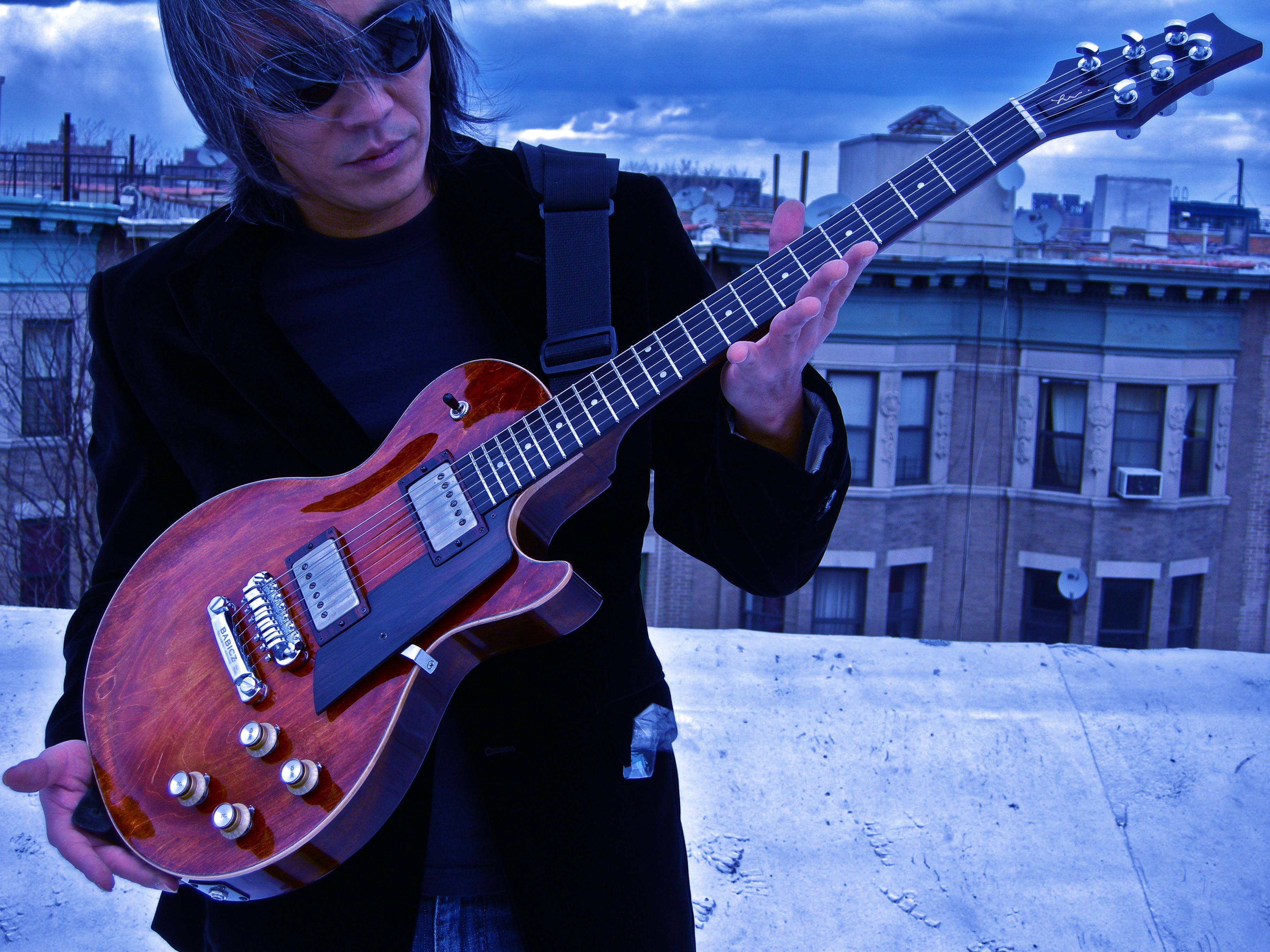
His “Lee Paul”
This is awesome…standard kit with binding and a paddle headstock. Look how the regular maple cap’s flat sawn grain pops with the honey stain and the high gloss clear coat on top. Check out the headstock. the tuners and the babicz bridge system.
Thanks for your kind words — it means a lot to me. I have always wanted have a 59 custom built to my specs, so I feel fortunate to have found you.
As far as staining and finishing is concerned — for better or worse — I began with a set of rather inflexible ideas: I did not want to grain fill using the conventional products (either water-, oil-based or epoxy). And, since, I had resolved to french polish the entire guitar using de-waxed, clear shellac, the choice was simple. I used 4F grade pumice stone along with the initial coat of shellac to grain fill the mahogany parts of the guitar — this was very labor intensive (on my next build I will try weakened hide glue which I used to glue the kit together).
I used W.D. Lockwood brand of water soluble dyes for the guitar (except the headstock which I initially used India Ink but decided to finish with Japan Ink (which I think yields a richer ebonizing result)). It was difficult getting the top to look interesting. I had no idea that maple was such blotchy wood. On top of that, I really wanted to show the grain (or the annual rings of the top). Basically, I treated the top as an artist’s canvas. Putting more stain where it needed and using bleach to lighten parts. I also sanded with various grade of 3M micro abrasive pads to accentuate the grain and to blend in various shades. I was fighting the wood basically. I thought about using gel stain after a week, but I am stubborn — so I stuck with it.
When I achieved certain “blotchy” look deemed interesting to me, I started with French polishing. Initially, I had put on quite a layer of shellac (about 8 bodying sessions). The guitar looked better than it did now (it really looked like a jewel) — but then I noticed the tap tone of the guitar had deteriorated somewhat. I took about half of the layer off.
After about a week, I used pumice stone (along with little walnut oil) to even out the finish and continued with medium to fine rubbing compound. I then used swirl removing compound and proceded to Maguire’s Show Room Glaze #7. On the back of the guitar I added a very thin layer of bowling alley wax with high carnauba wax content (no silicone!).
Did you notice that there is a real violin purfling on that guitar (no plastic binding)? Also the pickup rings are ebony and the scratch plate was carved out of ziricote (is that some sort of rosewood — very brittle).
I think I am asking too much of you to read this (i am rather long-winded), but you will be pleased to know that this guitar sounds amazing!!! And, I have played a real ’59 paul (owned by Jimmy Vivino). Over the weekend, I went over to my friend who owns 20 Les Pauls of various vintage — I have to tell you I would not have traded mine for any of my friends, ha, ha…
Thanks again, Phil. I hope to scrounge up some more change to buy another kit from you.












